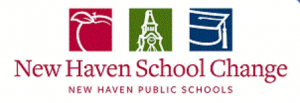Creating Meaningful Instruction through Mastery-Based Learning in New Haven, CT
CompetencyWorks Blog
 This is part of a series on mastery-based learning in Connecticut. See posts on New Haven Public Schools,Windsor Locks Public Schools, Naugatuck Public Schools, Superintendents Leading the Way in Connecticut, and New Haven Academy. Connecticut uses the term mastery-based learning, so that will be used instead of competency education within the series.
This is part of a series on mastery-based learning in Connecticut. See posts on New Haven Public Schools,Windsor Locks Public Schools, Naugatuck Public Schools, Superintendents Leading the Way in Connecticut, and New Haven Academy. Connecticut uses the term mastery-based learning, so that will be used instead of competency education within the series.
Despite snow days and flus and deadlines, I had the chance to visit with the leadership teams at New Haven Public Schools and New Haven Academy in March.
At New Haven Public Schools, I met with Superintendent Garth Harries; Imma Canelli, Deputy Superintendent; and Suzanne Lyons, Project Manager. Click here to read about New Haven Academy.
New Haven Public Schools is interested in mastery-based learning as it is a natural progression from the standards movement. Once standards are established, the question becomes, “How do we help students reach them, and how do we know if they reach them?” New Haven sees mastery-based learning as the framework to help create purposeful, meaningful instruction.
Lyons expanded this by adding, “Mastery-based learning is all about helping students become successful. Competencies are a starting point, but if your approach to mastery-based learning is just about competencies and grading, you are missing out on the purpose. It’s about instruction and additional instructional support when students need.”
About five years ago, New Haven joined the League of Innovation Schools and began to get exposed to the concept of competency-based learning. The next step was that five of the ten high schools began to participate as a PLC with Great Schools Partnership, including monthly meetings of the principals. The participating schools are High School in the Community, New Haven Academy, Metropolitan Business Academy, Cooperative Arts and Humanities, and Sound School.
On the day I was in New Haven, the district was getting ready to share a draft of the graduation competencies and performance indicators with teachers at all the high schools. The goal is that every high school moving to mastery will use the same set of core graduation competencies and be able to add others based on their themes or values; and that these competencies will focus and cohere their work across all high schools in terms of curriculum and instruction. Among all the high schools, 85 percent of the expectations will be based on the common set of standards. All schools had representatives involved in the process of developing the draft graduation expectations, at which point teachers had a chance to review and provide feedback to ensure the expectations represented what they think is important to students to know and be able to do by graduation. Canelli explained, “In our K-8 schools, we have a developed a tight curriculum structure. Mastery-based learning has filled a significant need in our high schools to focus instruction where students need help and to enable more cross-curricular learning experiences.”
A couple of quick lessons learned:
Know Where Co-Design is Needed: It is great to have schools that are interested in leading the way. However, there are places where co-design is going to be needed. One of the high schools began to create their own infrastructure of standards and performance indicators using a smaller grain size. As the work with Great Schools Partnership progressed, that school had to let go of some of their work to align with the district structure that has a slightly larger grain size. (FYI, the issue of how to organize what we want students to know and be able to do along a continuum of performance levels is an open question, with many different perspectives and different models developing. Although each have their rationale for how the structure is created, the best I can tell at this point is that decisions are based on preference and which tradeoffs districts are willing to make.)
Calibration between High Schools and Higher Education: Even though we talk about college and career readiness and we create lots of different types of proxies for what this means, the only way to truly tackle this is to calibrate between our high schools and higher education.
To resolve this problem, NHPS brought its two main higher education partners, Southern Connecticut State University and Gateway Community College, to the table to open up the question about how higher education places students upon admission (i.e., what does it mean to be college ready without remediation in terms of writing skills?). As a starting point, they selected student work using a released AP English item, with faculty from both institutions and high schools to review using the same rubric. Two people reviewed each paper, and if there was a discrepancy, they engaged a third review. They will be doing the calibration again in May, this time using responses students wrote to a series of articles on the school-to-prison pipeline.
Canelli emphasized, “Competency-based learning is not a solution. It’s a tool for where we want to go.”
See also: